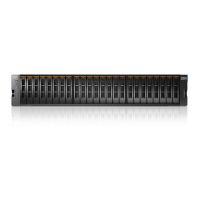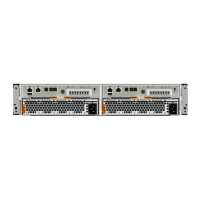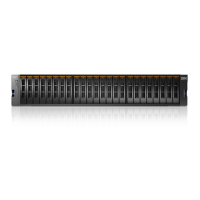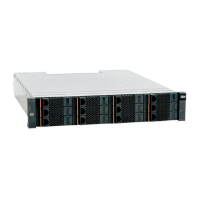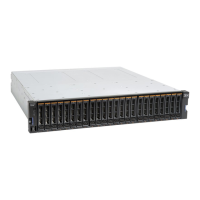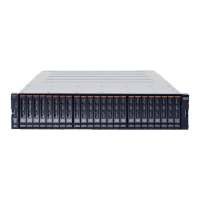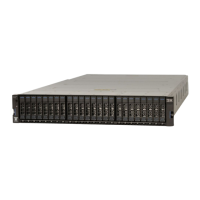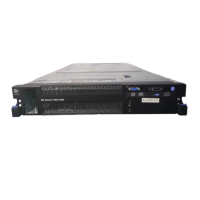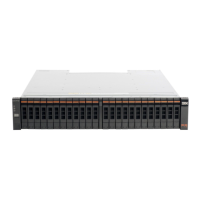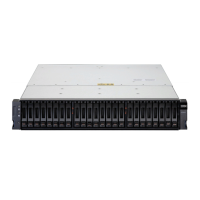20 Implementing the IBM Storwize V5000 Gen2 with IBM Spectrum Virtualize V8.1
Hosts can be Fibre Channel-attached through an existing Fibre Channel network
infrastructure or direct-attached, iSCSI-attached through an existing IP network, or directly
attached through SAS.
1.6.2 Node canister
A node canister provides host interfaces, management interfaces, and SAS interfaces to the
control enclosure. A node canister has the cache memory, the internal storage to store
software and logs, and the processing power to run the IBM Storwize V5000 Gen2
virtualization and management software. A clustered system consists of one or two node
pairs. Each node pair forms one I/O group. I/O groups are explained in 1.6.3, “I/O groups” on
page 20.
One of the nodes within the system, which is known as the
configuration node, manages
configuration activity for the clustered system. If this node fails, the system nominates the
other node to become the configuration node.
1.6.3 I/O groups
Within IBM Storwize V5000 Gen2, one or two pairs of node canisters are known as I/O
groups
. The IBM Storwize V5000 Gen2 supports either two-node or four-node canisters in a
clustered system, which provides either one or two I/O groups, depending on the model. See
Table 1-8 on page 11 for more details.
When a host server performs I/O to one of its volumes, all of the I/Os for a specific volume are
directed to the I/O group. Also, under normal conditions, the I/Os for that specific volume are
always processed by the same node within the I/O group.
When a host server performs I/O to one of its volumes, all of the I/O for that volume is directed
to the I/O group where the volume was defined. Under normal conditions, these I/Os are also
always processed by the same node within that I/O group.
Both nodes of the I/O group act as preferred nodes for their own specific subset of the total
number of volumes that the I/O group presents to the host servers (a maximum of 2,048
volumes for each host). However, both nodes also act as a failover node for the partner node
within the I/O group. Therefore, a node takes over the I/O workload from its partner node
(if required) without affecting the server’s application.
In an IBM Storwize V5000 Gen2 environment (which uses active-active architecture), the I/O
handling for a volume can be managed by both nodes of the I/O group. The I/O groups must
be connected to the SAN so that all hosts can access all nodes. The hosts must use multipath
device drivers to handle this capability.
Up to 256 host server objects can be defined to one-I/O group or 512 host server objects can
be defined in a two-I/O group system. More information about I/O groups is in Chapter 6,
“Volume configuration” on page 287.
Important: The active/active architecture provides the availability to process I/Os for both
controller nodes and allows the application to continue to run smoothly, even if the server
has only one access route or path to the storage controller. This type of architecture
eliminates the path/LUN thrashing that is typical of an active/passive architecture.

